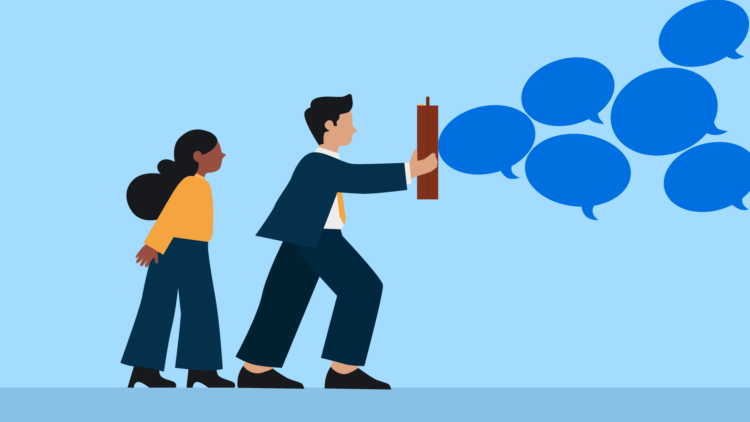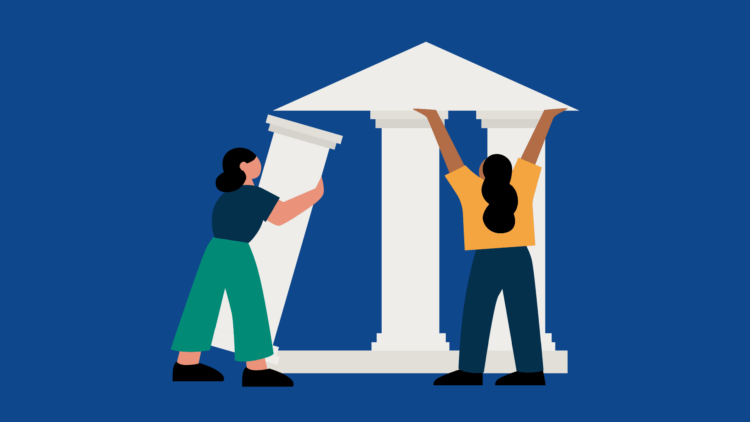What does it take to run a truly successful law firm? For many lawyers, factors like legal talent, a robust client base, and a clear vision are obvious—but well-designed law firm processes are just as important.
Whether they’re intentionally designed or arise naturally, law firm processes underlie how well a legal practice runs. From what you do when a potential client comes in, to how you communicate with them, to what you do when it’s time to invoice a customer, you and your law firm staff engage in a series of processes every day.
And your firm may have processes, but how do you make sure they’re as effective, profitable, and client-centered as they could be?
To best serve your clients and make your firm run efficiently, it’s critical to take the time to design and document the processes at your law firm. By identifying, documenting, and evaluating your firm’s processes, you can turn habitual steps and tasks into intentional, measurable systems that drive quality and performance for your firm and clients.
In the following post, we’ll outline eight steps you can take to establish or improve your law firm’s key processes.
1. Document your existing processes
As mentioned, every firm has processes. Unfortunately, if they aren’t clearly documented, they may be challenging to assess and optimize. If you haven’t recorded your firm’s existing processes, start by writing them down. Do this without judgment or trying to make changes at this stage. You can revise these current processes in subsequent steps to build more purposeful processes.
To make this manageable, make a list of each of the important processes that your firm engages in (which could include everything from invoicing to how you handle a case document). Then, go through the steps in this post, one by one.
For each process:
- Write down what you currently do. Whether you use sticky notes on a wall or create a map on a whiteboard, start by simply writing down every step that takes place for that particular process.
- Note who owns each step. Once you have every step written down, add who usually carries out or is responsible for that step.
Not sure which processes to start with? Your best bet is to start with simpler processes, like your phone call script or how you end a client engagement. Identify aspects of your daily operations that you haven’t been given much thought to before, and then add purpose to it. While it may be tempting to start with your client intake process because it comes at the beginning of a client engagement, it’s a good strategy to practice with low-hanging fruit and tackle more complex processes later.
2. Streamline the steps
The quickest way to improve a process is to trim any unnecessary or redundant steps. So, once you have all the current steps for a particular process written down, look for points that are obviously inefficient or ineffective—and cut them.
While you need certain steps because of outside forces (like clients, courts, or clerks), there are often inefficient areas that are created within the firm. These inefficient areas are more obvious when you write down and look at every step in the process. For example, are there handoffs happening that you could eliminate by having one person own more parts of a process? Are there areas where your firm could use technology to streamline a process?
The goal here is to try to reduce the number of steps in a process by 20%, where possible.
You may like these posts
3. Define the purpose of each process
While it’s crucial to look at each of your law firm’s processes at a detailed, step-by-step level, it’s also important to ensure you define the purpose and overarching goal of each process before you move forward. This can be as simple as writing down the key goal of the process at the top of your process document. Make sure the most essential outcome for the process is written in plain language (i.e., avoid overly technical language or jargon) and that everyone on your team can understand it.
By clearly defining the “why” of a process, you can be more effective in determining the ideal steps in the process. That way, you can ensure that everyone is on the same page and is empowered to make decisions if they need to diverge from the specific steps. While these instances should be unusual—especially if you’ve created a documented, repeatable law firm process—they will happen.

4. Identify your inputs
Next, determine what you need for the process to be successful.
A process is more than just a series of steps—it requires a variety of inputs (such as information, people, and materials) to create your desired output. Addressing these inputs when setting up your processes is a key way to improve overall process efficiency. After all, if a team member has to get up from their desk or email a manager every time an unknown input is required, then you’re losing time unnecessarily.
With this in mind, for each law firm process, consider the following:
- What inputs do team members need to complete the steps in the process?
- Where (or from whom) do those inputs come from?
By answering these questions, you’ll create a list of inputs needed to successfully complete each process. With this list of inputs in mind, you can then more easily find ways for team members to gather all of the inputs they’ll need in as few steps as possible.
5. Consider the client-facing view
It’s also key to think about your clients when mapping out your law firm’s processes.
Just as a theater audience won’t see the backstage processes when they go to a play, your legal clients won’t necessarily see everything that happens behind the scenes when you work on their case. But ultimately, what the client experiences should still be a critical part of how you design any law firm process.
By taking the time to identify what the client will see for any given process, you can ensure you design it to be more client-centered. Additionally, looking at a process from the client’s perspective may reveal steps that are duplicative or offer no client value—which means you may also be able to unlock more ideas for improving efficiency.
6. Map the internal processes
Once you’ve looked at it from the client’s point of view, the next step is to outline the specific steps you and your team need to successfully complete the process in question—these are the steps most people think of when they think of “processes.”
To do this, take the work you’ve just done and use that information to outline the necessary steps in a new process document. When doing this, use the plainest language possible and avoid being overly formal or too lawyerly. The goal is to communicate clearly so that the process document you create can be a useful resource.
7. Get your team on the same page
Now that you’ve created a process document outlining a process’ purpose, necessary inputs, and steps, ensure that everyone on your team can quickly identify what a process looks like when it’s done right. Just as it’s essential to clearly define the process’ goal, taking the time to ensure everyone knows what success looks like helps empower people to make decisions even during unusual situations.
Once you’ve created a process document, you could share scripts, sample documents, and even offer role-playing opportunities for your team. With their help, you can test out the new process and work out any complications before you put the revised process into practice.

8. Ensure Accountability
If you’ve done the work to select optimal and repeatable processes that matter to your firm’s operations, then you’d want to get them right. However, the unfortunate reality is that even the most well-designed, efficient process map is worthless if no one at your firm uses it, or if they go back to doing things the old way.
As such, the final step of creating accountability is in many ways the most important step. Whether it’s you or another member of your team, someone needs to take responsibility for integrating the new-and-improved process to ensure that the new process sticks. Whoever this is, that person must also be empowered to ensure compliance.
When you’re getting started with changing a long-standing process or implementing a new one, be cognizant of personality types within your law firm. Consider how the process will impact different members of the team. It may be helpful to find ways to try to make it fun, like turning the new process into a contest (with prizes) to encourage team members to work together to make sure everyone is doing their part.
Conclusion
Effective systems are the foundation of a successful law firm. But there’s no single recipe for the best way to do things at every law firm. However, by using an intentional, flexible approach to systems and document processes, you can design processes that are more client-focused, efficient, and effective for your law firm. Moreover, documented procedures make it easier for you to evaluate your staff’s work and empower them to make more informed decisions when performing tasks.
We published this blog post in January 2022. Last updated: .
Categorized in: Business








